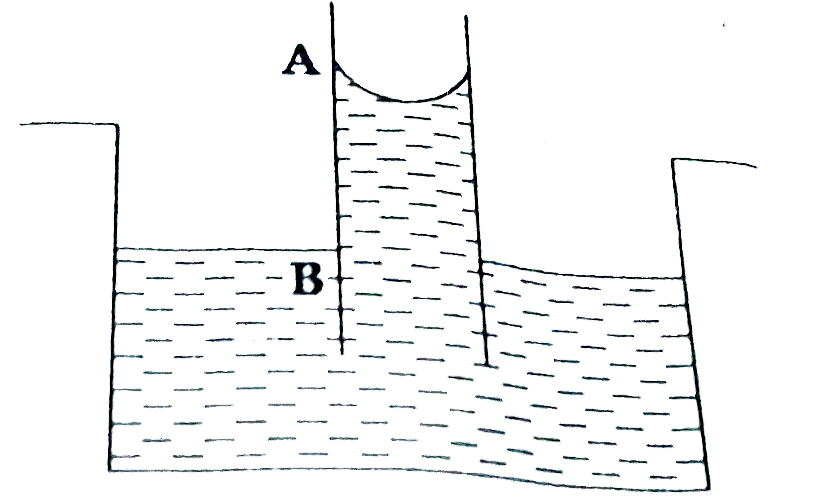Two parallel glass plates are dipped perpendiculary in a liquid of density p. The separation between the plates is 'd' and the surface tension T. The angle of contact of glass is θ. The capillary rise of the liquid between the plates is
(Tcosθpd)
(2Tcosθpgd)
(2Tpgd−cosθ)
(Tcosθpgd)
The correct Answer is:B
Similar Questions
Two parallel glass plates are dipped partly in the liquid of density 'd' keeping them vertical. If the distance between the plates is 'x', Surface tension is T and angle of contact is θ then rise of liquid between the plates due to capillary will be
View SolutionTwo vertical glass plates 1 mm apart are dipped into water. How high will the water rise between the plates. If the surface tension of water is 70 dyne cm−1
View Solution
Knowledge Check
- Question 1 - Select One
Two parallel glass plates are dipped partly in the liquid of denstiy 'd' keeping them vertical. If the distance between the plates is 'x', Surface tension is T and angle of contact is θ then ries of liquid between the plates due to capillary will be
ATcosθxdB2TcosθxdgC2TxdgcosθDtcosθxdg - Question 2 - Select One
Two parallel glass plates separated by a small distance x are dipped partly in a liquid of density " d" keeping them vertical .The surface tension of the liquid is T and angle of contact is θ . What is the rise of the liquid between the plates due to capillarity ?
ATcosθxdB2TcosθxdgC2TxdgcosθDTcosθxdg - Question 3 - Select One
Two parallel glass plates separated by a small distance x ar dipped partly in a liquid of density ' d keeping them vertical .The surface tension of the liquid is T and angle of contact is θ . What is the rise of the liquid between the plates due to capillarity ?
A2TcosθxdgB2TxdgcosθCTcosθxdgDTcosθxd
When a capillary tube of radius r is dipped vertically in a liquid of surface tension T, the liquid rises to a height h in the tube above the level outside the tube . If the angle of contact is θ the density of the liquid is ρ then the pressure difference between the points A and B is
 View Solution
View SolutionTwo vertical parallel glass plates are partially submerged in water. The distance between the plates is d and the length is l. Assume that the water between the plates does not reach the upper edges of the plates and the plates and the wetting is complete. The water will rise to height (ρ= density of water and α= surface tension of water)
View SolutionTwo parallel glass plates are held vertically at a small separation d and dipped in a liquid of surface tension T , the angle of contact θ=0∘ and density ρ . The height of water that climbs up in the gap between glass plates is given by
View SolutionTwo vertical glass plates 1 mm apart are dipped into water. How high will the water rise between the plates. If the surface tension of water is 70 dyne cm−1
View SolutionTwo vertical parallel glass plates are partially submerged in water. The distance between the plates is d and the length is l. Assume that the water between the plates does not reach the upper edges of the plates and the wetting is complete. The water will rise to height (ρ= density of water and α= surface tension of water)
View Solution

